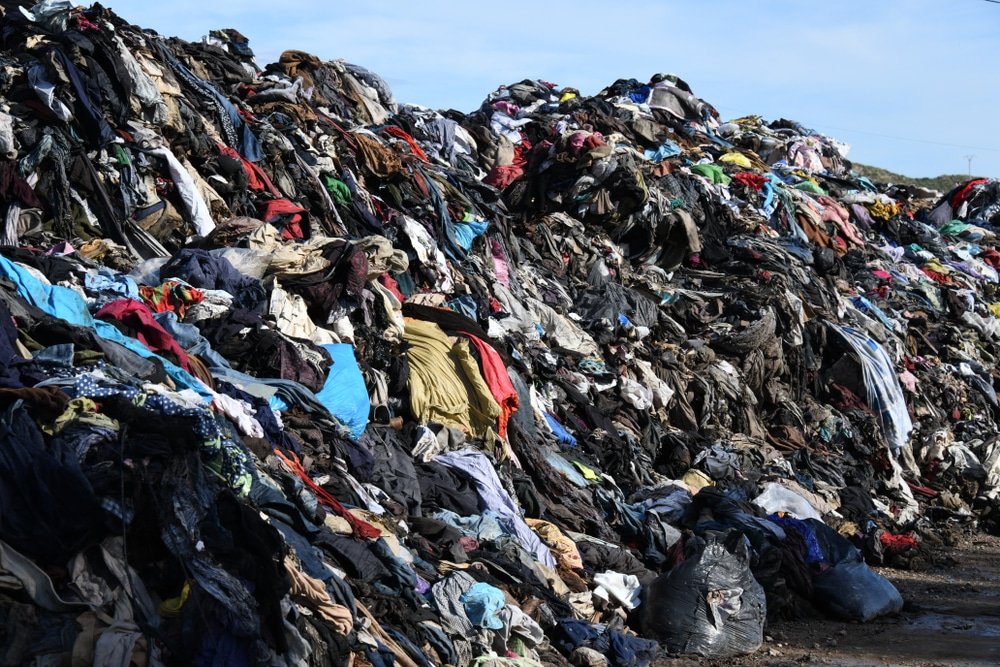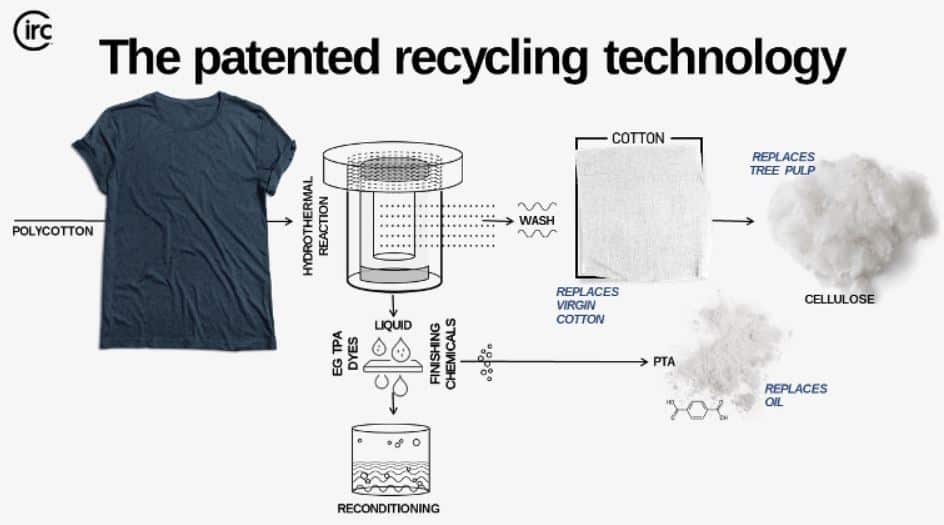A Virginia-based startup, Circ, has developed a unique hydrothermal processing technology for recycling blended textiles, like polyester-cotton blends. With fast fashion’s emissions and environmental impact becoming a significant concern, this innovation could play a crucial role in establishing a circular economy in the textile sector.
Fashion’s Emissions and Environmental Impact
The fashion industry is responsible for about 10% of annual global GHG emissions, and projections show that will increase over 50% by 2030.
Fashion’s environmental impact has increased considerably due to the rise of so-called “fast fashion”. This refers to the clothes mass produced at low cost with high-speed turnaround times to go with latest fashion trends.
With fast fashion, trending clothes styles and designs are replicable and become available on retail and online stores quickly. This brings the perception that clothes are disposable and drives over consumption, especially by consumers in rich countries.
Fast fashion is growing rapidly as people buy more clothes more often, and production has doubled within two decades. About 50 billion new items were made in 2000 and 20 years later, that number doubled to 100 billion.
- On average, a person buys 60% more clothes than they did before and everybody in Europe is throwing 15 kg or 33 lb. of textiles every year.
Unfortunately, less than a fifth of the discarded items get recycled. As a result, waste textiles from disposed garments are filling up landfills. Yet, demand for fast fashion clothes continues to grow, along with the sector’s harmful carbon emissions and water consumption.
- Manufacturing clothes uses about 100 billion cubic meters of water every year. That’s equal to 4% of the global total freshwater withdrawal.
These concerns are being addressed with the industry players showing interests in more sustainable practices. The European Union, in particular, is pushing for mandated textile waste collection by 2025.
Circ’s Unique Textile Recycling Technology
More clothes go to recycling facilities; recycled polyester comprises 15% of the textile market in 2020, from 11% in 2010. The biggest challenge of recycling textile waste is the difficulty in doing it with blended fabrics. But Circ’s innovative recycling technology fixes this concern.
The startup’s unique hydrothermal carbonization (HTC) processing technology offers a technical solution. It can separate blended textiles to recover the majority of the raw materials from waste to produce as-good-as-virgin materials that manufacturers can reuse to make new clothes.
This groundbreaking technology attracted €38 million in two funding rounds from large investors such as Bill Gates’s Breakthrough Energy Ventures, Zara’s Indite, and Patagonia’s Tin Shed Ventures.
Recycling Poly-Cotton Blends with Circ’s System
Circ’s HCT process is a repurpose from biofuel production to textiles recycling. The firm is running a pilot recycling facility that can recycle several tonnes of waste textile daily.
Right now, there’s no recycling method available that can recycle poly-cotton blended fabrics at commercial scale. While there’s an established process to break down pure polyester or PET for recycling purposes, working with poly-cotton blends is very difficult.
But Circ’s system successfully separates polyester and cotton without damaging the materials, recovering about 90% from the waste textile. It uses hot water, pressure, and chemical solvents to recover both materials – called the hydrothermal process.
By increasing the pH of hot water used in the HTC process, the polyester breaks down into two main monomers – terephthalic acid (PTA) and ethylene glycol (EG). As seen in the picture, cotton separates as a solid stream from the liquified polyester containing the PTA and EG.
Then those monomers recombine to produce new material for making PET plastic. On the other end, Circ uses a solvent to dissolve the cotton and make cotton-like fibers.
The system’s major goal is to recover the cotton fibers without damaging them by depolymerizing the polyester.
Other Uses of HTC Processing
Apart from fashion and textile recycling, the HTC process is also useful in other clean technology applications that further cut emissions.
For instance, Mura Technology, is about to complete its first commercial-scale plastic recycling facility in Teesside, UK. The company is also using a hydrothermal process to recycle all types of plastic wastes to recover reusable monomers.
Research further shows that HTC processes are also applied in converting cotton textile waste into energy sources like clean solid fuel.
Circ’s Next Steps
Circ is set to launch its first full-scale factory in 2025 that can process more than a thousand tonnes of waste textiles a week. The company aims to bring that capability to 10 billion pieces of clothes, representing 10% of the world’s apparel market.
The company faces market-based challenges, such as finding industrial buyers for its recycled materials. Its major investor fashion brands haven’t agreed yet to be the company’s customers.
Circ also needs to form partnerships and collaborations with other players to create a circular economy for textiles. This is critical not just to curb emissions of fast fashion clothes but also the entire industry.


